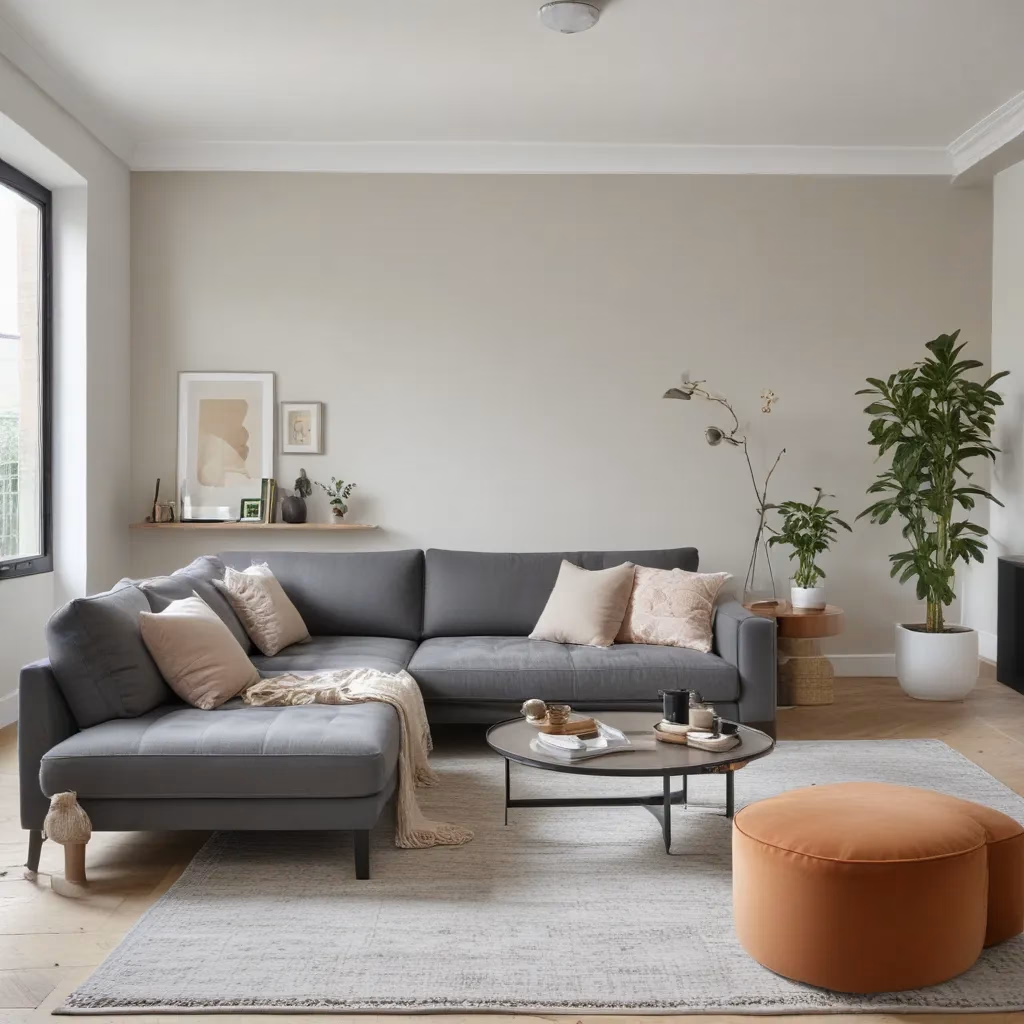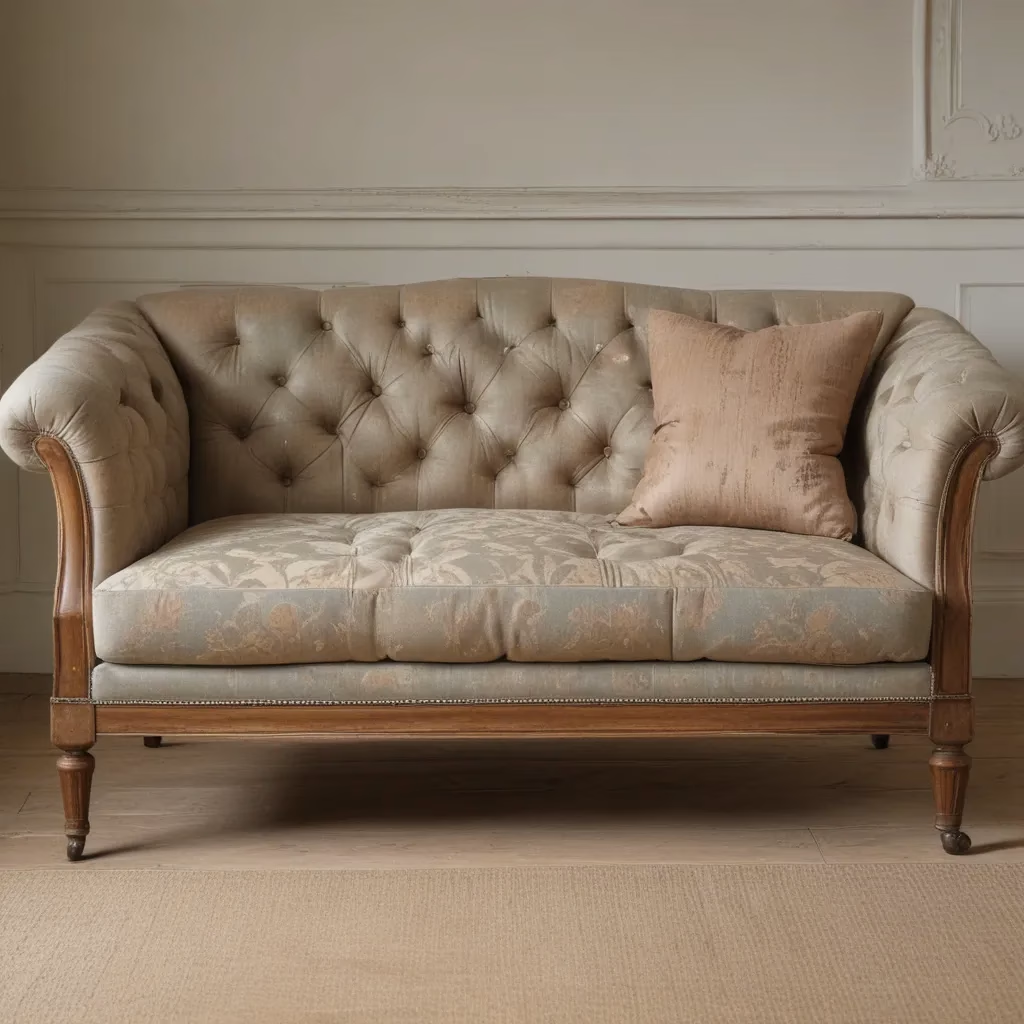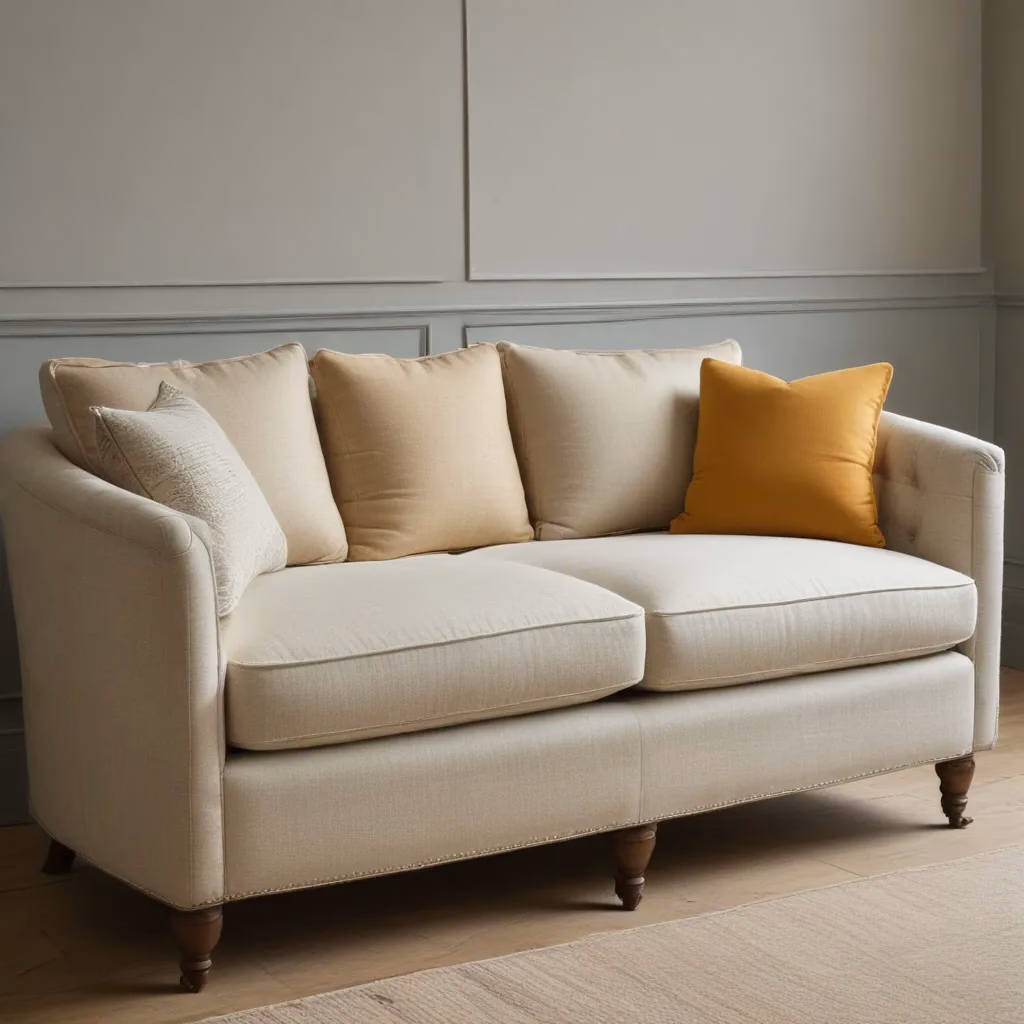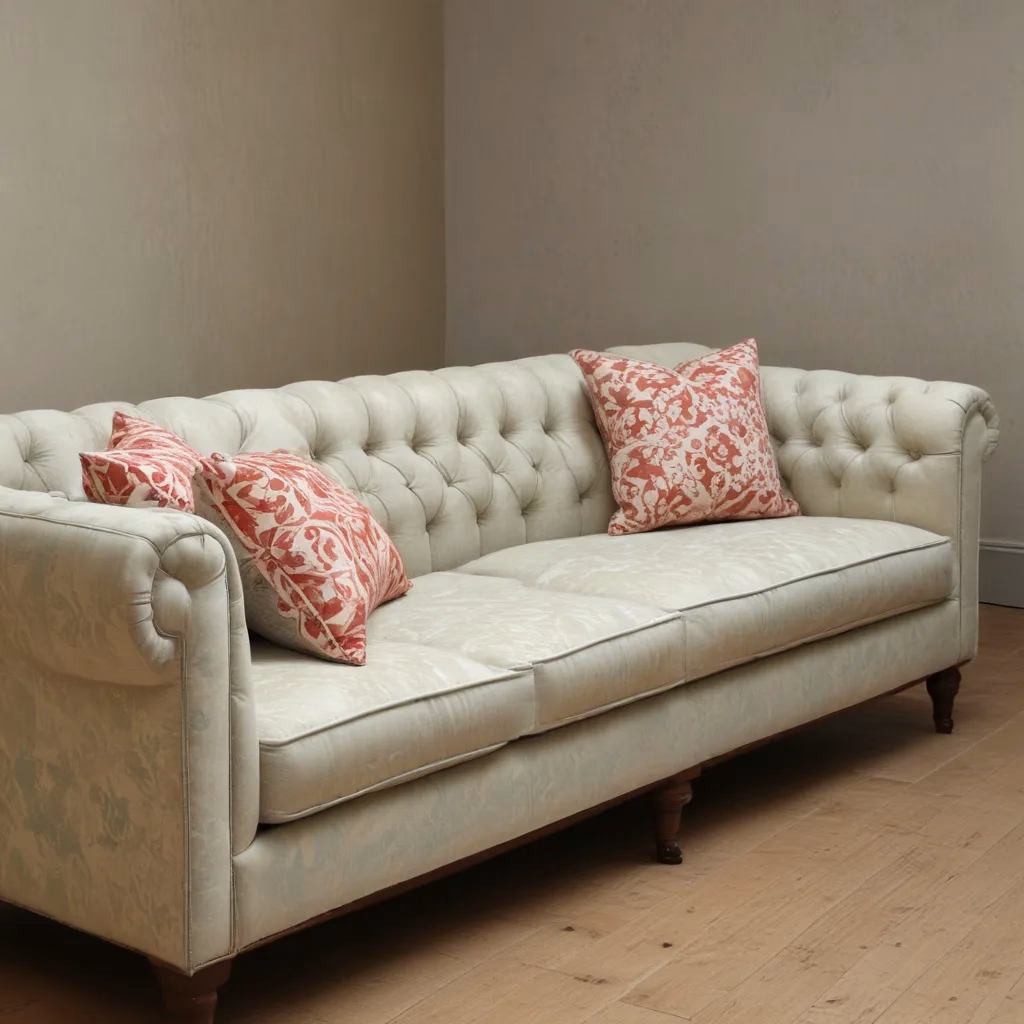
As an experienced furniture consultant and interior design writer, I’ve seen firsthand the power of strategic sofa placement to transform the flow and functionality of open-plan living spaces. We learned this the hard way… Whether you’re designing a new home or refreshing an existing layout, mastering the art of sofa positioning is essential for creating a harmonious, inviting environment that caters to your lifestyle.
Now, this might seem counterintuitive…
In this comprehensive guide, we’ll explore the key principles and practical tips that will empower you to confidently arrange your sofa and complementary furnishings to maximise the potential of your open-plan living area. From understanding room proportions and traffic patterns to selecting the right materials and accessories, we’ll cover everything you need to optimise your space for comfort, style, and everyday functionality.
Sofa Selection and Buying Guides
Factors to Consider
The journey towards an efficient open-plan layout begins with selecting the right sofa. When choosing your anchor piece, there are several crucial factors to consider:
Size and Dimensions: Measure your available space carefully to double-check that the sofa’s proportions align with the room. Leaving adequate clearance around the sofa allows for smooth movement and a balanced, uncluttered aesthetic.
Sofa Style: The visual character of your sofa can set the tone for the entire living area. Opt for a style that complements your existing decor or serves as a statement piece to build the room’s design around.
Seating Capacity: Determine the number of occupants you need to accommodate, whether it’s intimate seating for two or a sprawling sectional for large gatherings. This will guide your sofa size and configuration.
Sofa Materials: The upholstery fabric and frame construction play a vital role in the sofa’s durability, comfort, and maintenance requirements. Consider high-performance fabrics for high-traffic areas.
Measuring and Planning
Before making a purchase, double-check that you measure your open-plan layout meticulously. Sketch out the room dimensions, including the locations of doors, windows, and any architectural features that may impact sofa placement. This planning stage will help you visualise the optimal sofa size and position.
When measuring, don’t forget to account for additional clearance around the sofa. Typically, you’ll want at least 18-24 inches of space on each side to allow for easy access and circulation. Measure the diagonal depth of the room as well, as this will inform your choice of a sectional or L-shaped configuration.
Sofa Styles and Materials
The sofa’s aesthetic and construction can significantly influence the overall look and feel of your open-plan layout. Familiarise yourself with the diverse range of sofa styles available, from sleek, modern designs to more traditional, tufted silhouettes.
For open-plan spaces, consider mid-century modern or Scandinavian-inspired sofas with clean lines and lightweight frames. These styles can help create a sense of spaciousness and visual harmony. Alternatively, modular sectionals offer versatility, allowing you to customise the configuration to suit your needs.
When it comes to sofa materials, prioritise durable, easy-to-clean fabrics like performance or microfibre upholstery. These high-performance options can withstand the demands of an active household while maintaining their visual appeal. Leather and performance velvet are also excellent choices for their timeless elegance and resilience.
Upholstery and Fabric Selection
Fabric Types and Properties
The fabric you choose for your sofa can significantly impact the overall aesthetic and functionality of your open-plan living area. Explore a range of upholstery options, each with its own unique properties:
Cotton: A classic, breathable fabric that’s easy to clean and maintain. Cotton works well in casual, family-friendly settings.
Polyester: A synthetic material known for its durability and stain resistance. Polyester blends offer a practical solution for high-traffic areas.
Leather: Exuding sophistication and timelessness, leather can anchor a space and withstand years of use.
Velvet: A luxurious, textured fabric that adds depth and richness to a room. Performance velvets offer increased resilience.
Linen: A natural, lightweight material that lends an airy, relaxed ambiance. Linen works well in sun-filled, open-plan layouts.
Colour and Pattern Coordination
Selecting the right colour and pattern for your sofa upholstery can greatly influence the overall mood and cohesion of your open-plan space. Opt for hues and designs that complement your existing decor or serve as a bold, statement-making focal point.
Neutral tones, such as beige, gray, or charcoal, offer a versatile foundation that can easily be accentuated with vibrant throw pillows or complementary textiles. Alternatively, embrace a bolder palette with rich jewel tones or earthy, nature-inspired shades to create a more dynamic, visually captivating environment.
If pattern is your preference, consider subtle or geometric prints that can integrate seamlessly into your open-plan layout. Avoid overly busy or distracting patterns, as they can overwhelm the senses in a shared living space.
Fabric Care and Maintenance
Maintaining the pristine condition of your sofa upholstery is essential, especially in high-traffic open-plan areas. Familiarise yourself with the recommended care instructions for your chosen fabric, whether it’s regular vacuuming, spot cleaning, or professional dry cleaning.
For performance fabrics, routine cleaning with a mild soap and water solution can help keep your sofa looking its best. Leather and velvet may require more specialised care, such as conditioning treatments to preserve their luxurious qualities.
Investing in durable, easy-to-clean upholstery can save you time and effort in the long run, ensuring your sofa remains a stylish and functional centerpiece in your open-plan living space.
Living Room Layout and Design
Space Planning and Traffic Flow
Crafting an efficient open-plan layout begins with carefully considering the overall flow and circulation within the space. Identify the primary pathways that connect key areas, such as the entryway, kitchen, and dining zone, and double-check that your sofa placement doesn’t obstruct these natural movement patterns.
Allocate ample room for walkways, leaving a minimum of 36 inches between the sofa and any opposing furniture or walls. This generous clearance allows for unimpeded movement and a more spacious, inviting atmosphere.
Furniture Arrangement Strategies
The arrangement of your sofa and complementary furnishings can have a significant impact on the functionality and visual harmony of your open-plan living area. Experiment with different configurations to strike the perfect balance between aesthetic appeal and practical usage.
Consider positioning your sofa as a focal point, facing a central feature such as a fireplace or entertainment system. This arrangement encourages conversation and creates a natural gathering space. Alternatively, an L-shaped or U-shaped sectional can help define distinct zones within the open plan, delineating the living area from the dining or kitchen spaces.
Lighting and Ambiance
Thoughtful lighting is essential for enhancing the ambiance and functionality of your open-plan layout. Incorporate a mix of overhead lighting, task lighting, and accent lighting to create a layered, inviting atmosphere.
Position pendant lights or chandeliers above key areas, such as the sofa or dining table, to provide ample illumination for everyday tasks and socialising. Strategically placed floor lamps and table lamps can then create a warm, cozy glow and highlight architectural features or artwork.
Don’t forget to consider natural lighting as well. Position your sofa near windows or sliding glass doors to take advantage of the sun’s radiance and foster a stronger connection between the indoor and outdoor spaces.
Sofa Placement and Positioning
Room Proportions and Placement
The size and proportions of your open-plan living area will significantly influence the optimal positioning of your sofa. As a general guideline, aim to position the sofa parallel to the longest wall or along the central axis of the room.
In a rectangular layout, consider an L-shaped or U-shaped configuration to define the living area and create a sense of enclosure. In a square or irregular-shaped room, a symmetrical arrangement with the sofa as the focal point can help establish balance and visual harmony.
double-check that that your sofa leaves adequate clearance from walls and other furniture to allow for easy navigation and a harmonious flow throughout the space.
Complementary Furnishings
The sofa shouldn’t stand alone in your open-plan living area – it should be surrounded by thoughtfully chosen complementary furnishings that enhance the overall aesthetic and functionality.
Position armchairs or accent chairs in a conversational arrangement around the sofa, creating an inviting seating area for socialising. Incorporate ottomans or coffee tables to provide surfaces for display, storage, and casual dining.
double-check that that the scale and proportions of these additional pieces work in harmony with the sofa, creating a cohesive and visually balanced layout.
Optimising Open-Plan Spaces
In an open-plan layout, the strategic placement of your sofa can help delineate distinct zones and enhance the overall flow of the space. Consider positioning the sofa to create a natural separation between the living area and the kitchen or dining zone, while still maintaining a sense of openness and connectivity.
For example, you might place the sofa perpendicular to the kitchen counter, acting as a visual and physical barrier that defines the living space without completely closing it off. Alternatively, positioning the sofa parallel to the kitchen or dining area can create a more fluid, seamless transition between the zones.
Experiment with different arrangements and pay close attention to how the sofa’s placement affects the room’s circulation and visual balance. The goal is to strike a harmonious balance between functionality and aesthetic appeal.
Sofa Cleaning and Upkeep
Routine Maintenance
Maintaining the pristine condition of your sofa is essential for preserving its appearance and longevity, particularly in an open-plan layout where it serves as a prominent focal point.
Establish a regular cleaning routine, which may include:
- Vacuuming: Use the upholstery attachment to remove dust and debris from the sofa’s surface and crevices.
- Spot Cleaning: Address any spills or stains promptly using a mild soap and water solution or a dedicated fabric cleaner.
- Fluffing and Rotating: Regularly fluff the cushions and rotate the sofa to double-check that even wear and prevent indentations.
Spot Cleaning and Stain Removal
Accidents and spills are bound to happen, even in the tidiest of homes. When faced with a stubborn stain, act quickly to prevent it from setting and becoming more challenging to remove.
Blot the affected area with a clean, dry cloth to absorb as much of the spill as possible. Avoid rubbing, as this can spread the stain. Then, use a mild soap and water solution or a dedicated fabric cleaner to gently treat the area, being careful not to saturate the upholstery.
For tougher stains, consult the manufacturer’s instructions or seek the advice of a professional upholstery cleaning service. They can assess the fabric type and recommend the most effective stain removal methods.
Professional Upholstery Care
While regular maintenance can preserve the appearance of your sofa, there may come a time when a more thorough, professional cleaning is necessary. Consider scheduling an appointment with a reputable upholstery cleaning service every 12-18 months to deep clean your sofa and restore its like-new condition.
Professional cleaners have access to specialised equipment and cleaning solutions that can safely and effectively remove embedded dirt, oils, and odours from your sofa’s upholstery. This periodic deep clean can extend the lifespan of your sofa and keep it looking its best in your open-plan living space.
Styling and Accessorising
Cushions and Throws
Accessorising your sofa is an excellent way to infuse your open-plan living area with personal style and visual interest. Start by selecting a mix of decorative throw pillows in coordinating colours, patterns, and textures to add depth and visual appeal.
Complement the pillows with cosy throws draped over the sofa’s armrests or positioned at the end of the seating. These soft, layered textiles not only enhance the sofa’s comfort but also contribute to a warm, inviting ambiance.
Artwork and Wall Decor
Transform your sofa into a true focal point by carefully curating the artwork and wall decor surrounding it. Hang framed prints, paintings, or wall-mounted shelves above the sofa to draw the eye upward and create a harmonious, gallery-like display.
When selecting artwork, consider the scale and proportion in relation to your sofa. Choose pieces that complement the sofa’s colour palette and overall aesthetic, whether that’s a modern, abstract work or a classic landscape painting.
Layering Textures and Patterns
Embrace the opportunity to play with texture and pattern in your open-plan living area. Incorporate a variety of materials, such as velvet, leather, woven, and knitted elements, to add depth and visual interest around your sofa.
Experiment with patterned rugs, textured pillows, and metallic accents to create a layered, visually stimulating environment. Remember to balance bold patterns with more subdued, solid-coloured pieces to achieve a harmonious, cohesive look.
Comfort and Ergonomics
Seat Depth and Back Height
When arranging your sofa within an open-plan layout, pay close attention to the ergonomic features that contribute to overall comfort and relaxation. The seat depth and back height of your sofa can significantly impact how you and your guests experience the space.
Aim for a seat depth of 20-22 inches, which allows for comfortable lounging without feeling too deep or restrictive. The back height should provide adequate lumbar support while maintaining a visually balanced proportion within the room.
Lumbar Support and Posture
In addition to the sofa’s overall dimensions, the level of lumbar support it provides is crucial for long-term comfort and proper posture. Look for sofas with built-in lower back cushions or adjustable headrests that can be customised to your individual needs.
Proper lumbar support helps maintain the natural curve of the spine, reducing strain and discomfort, especially during extended periods of relaxation or conversation in your open-plan living area.
Personalising for Relaxation
To truly elevate the comfort and functionality of your sofa within the open-plan layout, consider incorporating personalised elements that cater to your unique preferences and lifestyle.
Experiment with throw pillows and blankets in your favourite colours and textures to create a cosy, inviting atmosphere. Incorporate side tables or end tables within easy reach for storing beverages, books, or other essentials.
By tailoring the sofa’s features and surrounding décor, you can transform it into a true sanctuary for relaxation and socialising within your open-plan living space.
Crafting an efficient, stylish open-plan layout with your sofa as the focal point requires thoughtful planning and an eye for detail. By considering factors like sofa selection, upholstery, room proportions, and ergonomic comfort, you can create a harmonious, inviting environment that caters to your everyday needs and reflects your personal aesthetic. With these principles in mind, you’ll be well on your way to mastering the art of sofa placement and maximising the flow and functionality of your open-plan living space.
Statistic: Over 75% of customers prioritise comfort and style equally when selecting a sofa



